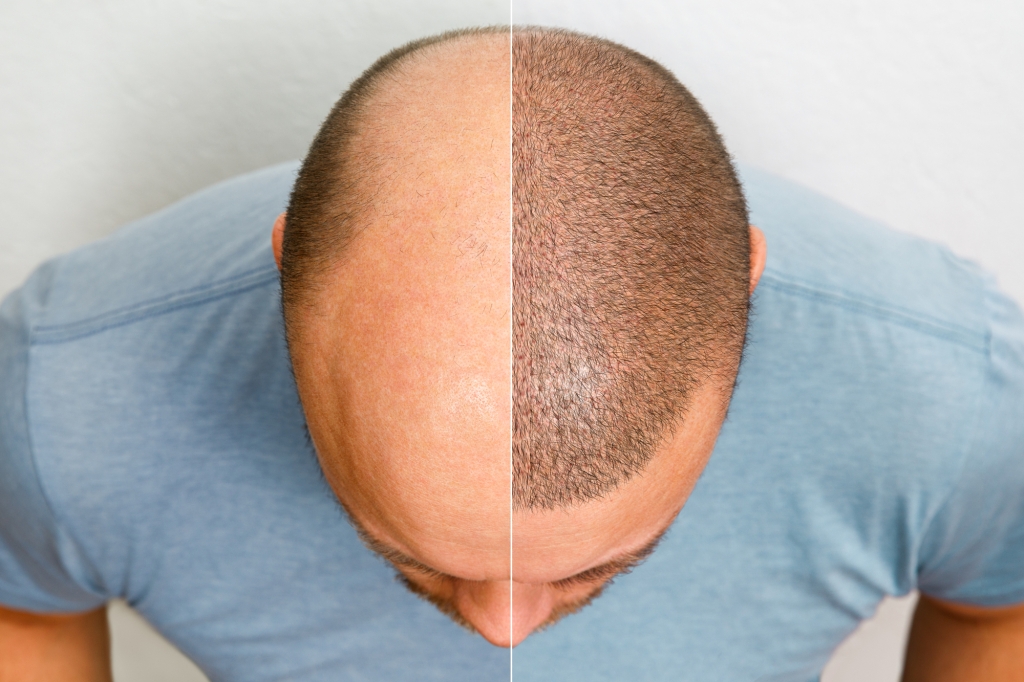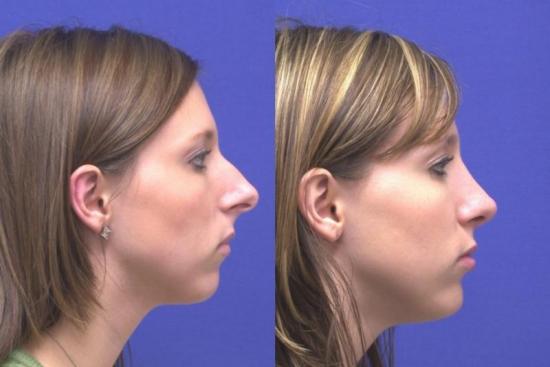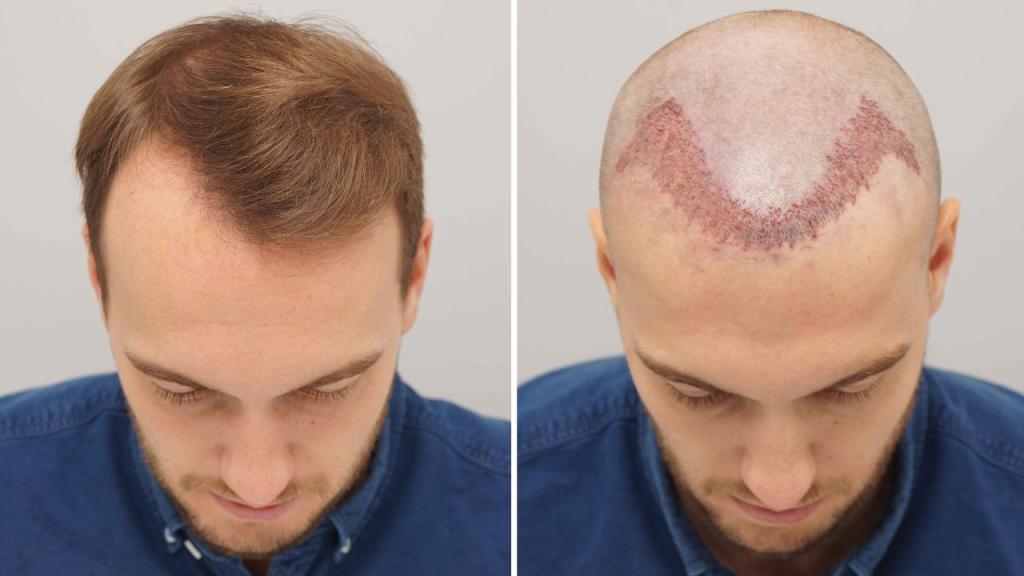Hair Transplantation: Separating Fact From Fiction
When it comes to hair transplantation, there are many myths and misconceptions that can cloud the judgment of potential patients. It is important to separate fact from fiction in order to make an informed decision about this procedure. In this blog post, we will debunk some commonly held beliefs about hair transplants and shed light on the truth behind them.
Myth 1: Hair transplants are only for men.
Contrary to popular belief, hair transplants are not exclusive to men. Women can also benefit from this procedure, especially those suffering from conditions such as female pattern baldness or thinning hair. The techniques used in hair transplantation have advanced significantly over the years, making it a viable option for both men and women.
Myth 2: Hair transplants result in an unnatural appearance.
One of the biggest misconceptions about hair transplants is that they produce an artificial or “pluggy” look. However, with the advent of modern techniques such as follicular unit extraction (FUE), the results of hair transplantation have become much more natural. Skilled surgeons can carefully mimic the natural hairline and create a seamless integration between transplanted and existing hair.
Myth 3: Hair transplants are a quick fix.
While hair transplantation can provide long-lasting results, it is not an overnight solution. The process requires time and patience, as the transplanted hair takes time to grow and fully integrate into the scalp. It is important to have realistic expectations and understand that visible results may take several months to a year to fully appear. However, the wait is often worth it for those seeking a permanent solution to their hair loss.
- Overall, it is crucial to separate fact from fiction when considering hair transplantation. Women can also benefit from this procedure, and the results can be incredibly natural if performed by a skilled surgeon. Patience is key when undergoing hair transplantation, as visible results may take time to appear. By dispelling these common myths, individuals can make informed decisions about their hair restoration journey.
| Myth | Truth |
|---|---|
| Hair transplants are only for men. | Both men and women can benefit from hair transplantation. |
| Hair transplants result in an unnatural appearance. | Modern techniques create natural-looking results. |
| Hair transplants are a quick fix. | Visible results may take several months to a year to appear. |
Dispelling Common Myths About Hair Transplants
When it comes to hair transplants, there are a lot of misconceptions and myths that surround this procedure. These false beliefs can often deter individuals from seeking the hair restoration treatment they desire. In this blog post, we aim to debunk some of the most common myths about hair transplants, providing you with accurate information to help you make an informed decision.
Myth 1: Hair transplants are only for men.
This is a common misconception that needs to be debunked. While it is true that hair loss is more prevalent in men, women can also experience hair thinning or baldness. Hair transplants are a viable solution for both men and women who are suffering from hair loss. The procedure is tailored to meet individual needs, ensuring natural-looking and satisfying results, regardless of gender.
Myth 2: Hair transplants are painful.
Another myth that often deters individuals from getting a hair transplant is the belief that it is a painful procedure. However, thanks to advanced techniques and technologies, hair transplants are now minimally invasive and virtually painless. Local anesthesia is used to numb the scalp during the procedure, ensuring that patients experience minimal discomfort or pain. The recovery period is also relatively quick, with most individuals returning to their normal activities within a few days.
Myth 3: Hair transplants result in unnatural-looking hair.
Many people fear that a hair transplant will leave them with an artificial-looking hairline or obvious hair plugs. However, this is far from the truth. The field of hair transplantation has advanced significantly, allowing for more natural and aesthetically pleasing results. Surgeons now use techniques such as follicular unit extraction (FUE) to harvest individual hair follicles, resulting in a seamless and undetectable hairline. Skilled surgeons are also adept at creating a hairline that suits the patient’s age, facial features, and overall appearance, ensuring a natural and satisfying outcome.
In conclusion, it is important to separate fact from fiction when it comes to hair transplants. By dispelling common myths and misconceptions, we hope to provide individuals with accurate and helpful information. Remember, hair transplants are a safe and effective option for both men and women, offering natural-looking results and improving self-confidence. If you are considering a hair transplant, consult a qualified hair restoration specialist to understand your options and find the best treatment plan for your needs.
The Truth Behind Hair Transplantation Misconceptions
When it comes to hair transplantation, there are many myths and misconceptions that can cloud people’s judgment and prevent them from making informed decisions. It is important to separate fact from fiction and debunk these common misconceptions surrounding hair transplants. By gaining a better understanding of the truth behind these misconceptions, individuals can make well-informed decisions about hair restoration procedures.
One common myth about hair transplantation is that it is a painful and invasive procedure. However, advancements in technology and techniques have made hair transplants relatively painless and minimally invasive. Local anesthesia is typically used to numb the area where hair follicles are being transplanted, ensuring that patients experience minimal discomfort during the procedure. Additionally, many patients report minimal pain and quick recovery times following the surgery.
Another misconception surrounding hair transplantation is that it is only suitable for individuals with severe hair loss. In reality, hair transplantation can benefit individuals with varying degrees of hair loss. Whether you are experiencing minor thinning or significant baldness, a skilled hair restoration surgeon can tailor the procedure to your specific needs. With techniques such as Follicular Unit Extraction (FUE) and Follicular Unit Transplantation (FUT), hair transplantation can provide natural-looking results that restore your confidence.Hair transplants have also been associated with the misconception that they result in an unnatural appearance. However, when performed by a skilled and experienced surgeon, hair transplantation can produce extremely natural-looking results. The surgeon meticulously plans the placement of each hair follicle, taking into consideration factors such as hairline design, density, and hair direction. This attention to detail ensures that the transplanted hair blends seamlessly with the existing hair, creating a natural and aesthetically pleasing result.Many people believe that hair transplantation is a quick fix and guarantees permanent results. While hair transplantation provides a long-term solution to hair loss, it is important to understand that the procedure does not prevent future hair loss. The transplanted hair follicles are typically resistant to the effects of balding hormone DHT, which causes hair loss in genetically susceptible individuals. However, there may be other factors that can contribute to hair loss in the future, such as aging or medical conditions. Therefore, it is important for individuals to have realistic expectations and consult with their surgeon about the potential need for future maintenance procedures.
| Myth | Fact |
|---|---|
| Hair transplantation is a painful procedure. | Advancements have made hair transplants relatively painless. |
| Hair transplantation is only suitable for severe hair loss. | Hair transplantation can benefit individuals with varying degrees of hair loss. |
| Hair transplantation results in an unnatural appearance. | A skilled surgeon can produce extremely natural-looking results. |
| Hair transplantation guarantees permanent results. | Hair transplantation provides a long-term solution, but future maintenance may be required. |
By debunking these misconceptions surrounding hair transplantation, individuals can make more informed decisions about undergoing the procedure. Consulting with a skilled and experienced hair restoration surgeon is crucial in understanding the realities of hair transplantation and achieving the desired results. With a deeper understanding of the truth behind these misconceptions, individuals can take steps towards restoring their hair and regaining their self-confidence.
Unraveling Misunderstandings About Hair Restoration
When it comes to hair restoration, there are numerous myths and misconceptions that often cloud people’s understanding of this procedure. In this blog post, we will debunk some of the most common misunderstandings surrounding hair transplantation.
Myth: Hair transplants are only for people with completely bald heads.
Contrary to popular belief, hair transplants are not exclusively for individuals who have lost all their hair. In fact, hair restoration procedures can be tailored to address various levels of hair loss, ranging from minor receding hairlines to significant balding. Whether you are experiencing early signs of hair loss or have already lost a significant amount of hair, a hair transplant can be a suitable solution.
Myth: Hair transplants look unnatural.
This is a common misconception that stems from outdated techniques and poor execution in the past. Thanks to advances in technology and surgical techniques, modern hair restoration procedures can provide incredibly natural-looking results. Skilled surgeons carefully plan the placement and direction of each hair graft to mimic the natural growth pattern, ensuring a seamless and undetectable outcome.
Myth: Hair transplants are painful and require a long recovery time.
While any surgical procedure involves some level of discomfort, hair transplantation is generally well-tolerated by patients. Local anesthesia is administered during the procedure to minimize any pain or discomfort. Additionally, most patients experience minimal downtime and can return to their normal activities within a few days. The recovery period may involve some mild swelling or redness, but it is typically short-lived.
- Myth: Hair transplants are only successful for men.
- Fact: Although hair loss is more prevalent in men, hair transplants can also be highly successful for women. Female hair restoration procedures are specifically designed to cater to the unique needs and hair characteristics of women.
- Myth: Hair transplants are a quick fix.
- Fact: Hair transplantation is a process that requires patience and a realistic understanding of the results. It takes time for the transplanted hair to grow and blend in with the existing hair. Depending on the individual, it may take several months to a year before the full results are visible. However, the permanent and natural-looking outcome makes the wait well worth it.
| Myth | Fact |
|---|---|
| Hair transplants are expensive. | While hair restoration procedures may have a significant upfront cost, they can provide a long-lasting solution, eliminating the need for ongoing treatments or products. Additionally, many clinics offer financing options to make the procedure more accessible. |
| Hair transplantation requires shaving the entire head. | With advanced techniques such as FUE (Follicular Unit Extraction), it is possible to perform hair transplantation without the need to shave the entire head. This allows for a more discreet and less noticeable procedure, particularly for individuals who prefer to keep their hair longer. |
Addressing Fallacies Surrounding Hair Transplants
When it comes to hair transplants, there are numerous myths and misconceptions that can make it challenging to separate fact from fiction. This article aims to debunk some of the common misconceptions surrounding hair transplantation and provide clarity on the subject.
Myth 1: Hair transplants are only for men
Contrary to popular belief, hair transplants are not limited to men. Both men and women can benefit from this procedure. Hair loss affects individuals of all genders, and hair transplant techniques have evolved to cater to the specific needs and characteristics of each patient.
Myth 2: Hair transplants look unnatural
An enduring myth about hair transplants is that they result in an unnatural appearance. However, advancements in technology and techniques have significantly improved the naturalness of results. Skilled surgeons can transplant hair follicles in a way that mimics natural hair growth, ensuring a seamless and undetectable outcome.
Myth 3: Hair transplants require extensive downtime
Another misconception is that hair transplant procedures involve long recovery periods and extensive downtime. While it’s true that some downtime is necessary for proper healing, it is usually minimal. Most patients can resume their regular activities within a few days, and any discomfort experienced post-surgery can be managed with prescribed medications.
| Common Myths About Hair Transplants | Truths About Hair Transplants |
|---|---|
| Only men can undergo hair transplants | Both men and women can benefit from hair transplants |
| Hair transplants look unnatural | Advancements in technology have improved the naturalness of results |
| Hair transplants require extensive downtime | Downtime is minimal, and most patients can resume regular activities within days |
In conclusion, it is crucial to debunk the myths and misconceptions surrounding hair transplants. Understanding that this procedure is suitable for both men and women, can achieve natural-looking results, and involves minimal downtime can help individuals make informed decisions about their hair restoration journey.
Debunking Popular Myths About Hair Transplantation
Many people who are experiencing hair loss or baldness often consider hair transplantation as a viable solution to restore their hair. However, there are several myths and misconceptions surrounding this procedure that can deter individuals from undergoing it. In this blog post, we will debunk some of the popular myths about hair transplantation, providing you with accurate information and helping you make an informed decision about this treatment.
Myth 1: Hair transplantation is painful and requires a long recovery period.
In reality, hair transplantation is a minimally invasive procedure that is performed under local anesthesia. This means that you will not experience any pain during the surgery. Additionally, the recovery period after a hair transplant is relatively short. Most patients can return to their daily activities within a few days, although it may take several months for the transplanted hair to fully grow.
Myth 2: Hair transplantation results are unnatural and obvious.
This is a common misconception that often arises from outdated techniques used in the past. Nowadays, hair transplantation methods have significantly advanced, allowing for more natural-looking results. Surgeons use micrografting and follicular unit extraction (FUE) techniques to ensure that hair grafts are placed in a way that mimics the natural hair growth pattern. This ensures that the results are seamless and hardly noticeable to others.
Myth 3: Hair transplantation is only suitable for men.
While it is true that hair loss is more common among men, hair transplantation is also a viable option for women experiencing hair thinning or baldness. The procedure can be successfully performed on both men and women, as long as they have sufficient donor hair for transplantation. The suitability of hair transplantation for a particular individual will depend on various factors, including the extent of hair loss, the quality of donor hair, and the individual’s overall health.
Myth 4: Hair transplantation is a quick fix for all hair loss problems.
It is important to understand that hair transplantation may not be suitable for everyone. Certain conditions such as extensive hair loss, insufficient donor hair, or medical factors may limit the effectiveness of the procedure. Additionally, hair transplantation is not a solution for hair loss caused by underlying medical conditions or certain medications. Consulting with a qualified hair transplant surgeon is crucial to determine the most suitable treatment options for your specific hair loss problem.
| Myth | Reality |
|---|---|
| Hair transplantation is only for the rich and famous. | Hair transplantation is now more accessible and affordable to a wider range of individuals. Many clinics offer flexible financing options, making it more feasible for people with different budgets to undergo the procedure. |
| Hair transplantation is a one-time procedure. | In some cases, additional sessions may be required to achieve desired results, especially in individuals with extensive hair loss. The number of sessions needed will depend on various factors, including the extent of hair loss and individual expectations. |
| Transplanted hair requires special care and maintenance. | Transplanted hair does not require any special care or maintenance compared to natural hair. You can style, wash, and cut it just as you would with your original hair. However, it is important to follow post-transplantation care instructions provided by your surgeon to optimize the results. |
By debunking these popular myths about hair transplantation, we hope to provide you with accurate information regarding this procedure. If you are considering hair transplantation as a solution for your hair loss, it is essential to consult with a qualified hair transplant surgeon who can assess your individual situation and provide expert advice. Remember, making an informed decision is crucial when it comes to choosing the right treatment for your hair restoration journey.
Busting Hair Transplantation Misconceptions
The field of hair transplantation has been surrounded by various myths and misconceptions for years. These misconceptions often lead to confusion and hesitation for individuals considering this procedure. In this blog post, we aim to bust some of the most common myths about hair transplantation and provide accurate information to help you make an informed decision.
Myth 1: Hair transplantation is only for men.
Contrary to popular belief, hair transplantation is not limited to men. While it is true that male pattern baldness is more common, women can also experience hair loss due to various factors. Hair transplantation techniques can be adapted to address the specific needs of both men and women, providing a natural and long-lasting solution for hair loss.
Myth 2: Hair transplantation results in an unnatural look.
This is a common misconception that often stems from outdated techniques used in the past. However, with advancements in technology and surgical techniques, hair transplantation can now provide incredibly natural-looking results. Skilled surgeons strategically place grafts in a way that mimics the natural pattern of hair growth, ensuring a seamless and undetectable outcome.
Myth 3: Hair transplantation is a painful and risky procedure.
Thanks to modern surgical techniques, hair transplantation is a relatively comfortable and safe procedure. Local anesthesia is used to numb the scalp, minimizing any discomfort during the surgery. Post-operative pain is usually manageable with mild pain medication prescribed by the surgeon. As with any surgery, there are potential risks involved, but by choosing an experienced and reputable surgeon, the risks can be significantly minimized.
| Common Myths About Hair Transplantation | Debunked |
|---|---|
| Myth 1: Hair transplantation is only for men. | Fact: Hair transplantation is suitable for both men and women. |
| Myth 2: Hair transplantation results in an unnatural look. | Fact: Advanced techniques ensure natural-looking results. |
| Myth 3: Hair transplantation is a painful and risky procedure. | Fact: Modern techniques make the procedure relatively comfortable and safe. |
In conclusion, it is important to debunk the myths and misconceptions surrounding hair transplantation to ensure individuals have accurate information when considering this procedure. Hair transplantation is not only limited to men and can provide natural-looking results. Moreover, it is a relatively comfortable and safe procedure when performed by a skilled surgeon. By separating fact from fiction, individuals can make confident decisions about their hair restoration journey.




Leave a comment